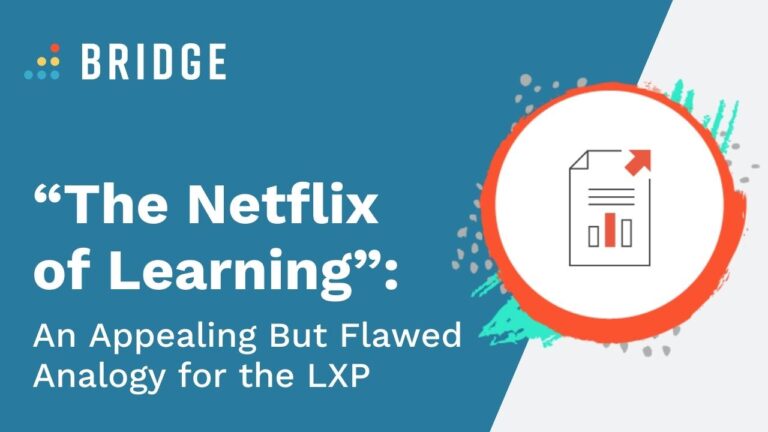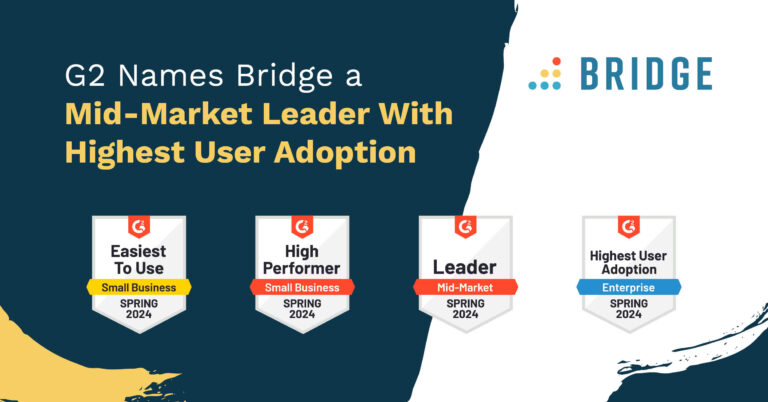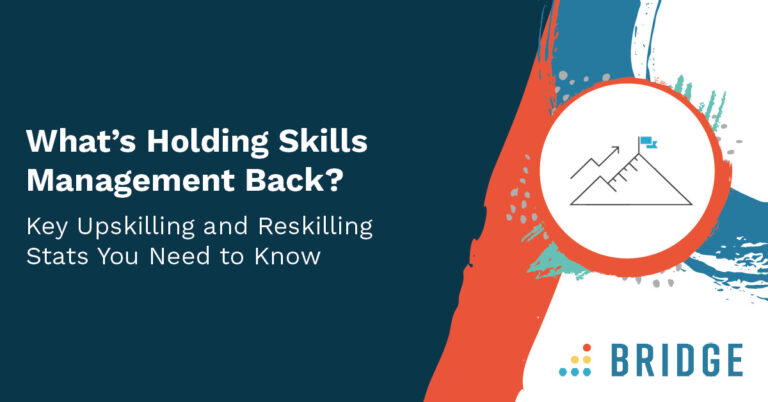As buzzwords go, who wouldn’t want to be thought of as offering the Netflix of Learning. It‘s a bold statement that promises unprecedented levels of content, engagement, and digital innovation. It conjures images of users spending hours happily binge-watching viral content in perpetuity. While it has been said that learning experience platforms offer this fabled Netflix-like experience, we think the analogy is flawed. Here’s why.
Cast your mind back to pre-pandemic times. Some of the biggest tech announcements of 2019 were about streaming subscription platforms. At the time, the market was exploding. We’ve seen the entry of Apple, AT&T, Disney, CNN, and NBCUniversal into the consumer video streaming market. To varying degrees of success. Meanwhile, Google and Microsoft launched major flagship services attempting to claim territory in an emerging streaming space—video games—opened up by growing consumer comfort with the idea of the technology.
There’s a belief that the trend and the greatest potential gains in learning technology involve “learning like you live”. There’s value in having the presentation and structure of learning platforms replicate ideas established by the technologies in our everyday lives. With streaming entertainment platforms such a huge aspect of domestic life, it’s surely inevitable that a learning technology will emerge in that familiar shape. As many before us have asked, invoking the current category leader, where is”‘The Netflix of Learning”?
The Fantasy of the Visual Learning Playground
The answer has supposedly emerged in the form of the learning experience platform or LXP. This is a diverse and sometimes nebulous category that many platforms claim membership of. It’s certainly an appealing answer: people love the Netflix format. As learning creators, we would be thrilled to create an environment where content is so enthusiastically consumed. Or even binge-viewed. As content consumers, we understand the appeal of learning in a format we regularly immerse ourselves in.
However, while there’s certainly a kernel of truth in the idea that the LXP is this sought-after “Netflix of Learning”, the analogy is ultimately superficial. What people want is a user interface that looks like Netflix, not necessarily everything behind that UI. When people think about Netflix, they inevitably think of the visual nature of the platform. In other words, modern images designed to catch your attention that, when selected, draw you in with motion and trailers.
Netflix’s great strength is how it has visually cataloged content in this way. However, it’s important to never lose sight of the fact that people go to streaming platforms for entertainment and escapism—not productivity or learning. It’s where you go to disconnect from the world. This is hardly the connotation you want for corporate learning, no matter how fun we want it to feel.
RELATED READING | ‘What’s a Learning Experience Platform [Overview]’
Why Netflix Is an Imperfect LXP Model
Furthermore, Netflix is actually a great example of the difficulty of recommending relevant content to users. Even with 221 million subscribers worldwide feeding its algorithm (as of Q1 2022), it’s hardly unusual to find yourself scrolling endlessly through Netflix’s recommendations.
Sometimes, a good amount of the content that Netflix shows to you simply misses the mark (although critics would argue its algorithm is getting better at predicting what we’d want to consume). Perhaps you exclude content because the mood simply doesn’t take you at that moment. You’re just as likely to have a deer-in-headlights moment in the face of too much relevant content. Considering that such platforms have a pool of thousands of titles to draw, this experience is arguably part of the design: breadth of content covers the gaps left by the human whims that algorithms struggle with. And when all else fails, at least you’re impressed by just how much there is available.
This maps poorly to corporate learning platforms. Organizations aren’t trying to ensure learners continue to pay monthly subscriptions out of a fear of missing out. They’re also unlikely to have quite so many feature-length assets. Most organizations want to quickly provide the answers that their employees need, to avoid frustration and obstruction.
Netflix also has a recommendation engine essentially disconnected from its inner workings. You’ll watch titles recommended by a friend, or a show currently being enthusiastically discussed on social or entertainment media. In contrast to LXPs, Netflix currently has no built-in social functions. Other than the ability to rate content, nothing in the platform is intentionally collaborative.
So if the LXP isn’t the Netflix of Learning, what is? We believe the answer lies in another popular video streaming platform: YouTube.
HANDPICKED FOR YOU | ‘Subject Matter Experts: The Key to Knowledge Transfer’
YouTube as the Starting Point for the Forward-Thinking LXP
The LXP is in fact more analogous to YouTube. Indeed, the main reason that the “YouTube of Learning” hasn’t caught on as a buzzword is that YouTube is the YouTube of learning.
People already check YouTube if they want to learn how to do something. It’s an invaluable resource for concise, microlearning-style pieces of content that explain how to do something. YouTube is also a haven for user-generated content. Over half—65%—of 2019’s top 100 YouTube channels belong to digital natives rather than broadcasters, sports, news, or music organizations. And the same report from 2021 lists YouTube as still “the most popular user-generated online video service”, with people spending an estimated 41 minutes per day watching content. User-generated content is an important differentiator for many LXPs when compared to the traditional purely top-down approach of the Learning Management System LMS
That said, YouTube isn’t a perfect analog for the LXP either. YouTube’s main purpose is still very much entertainment. However, the behaviors of how-to searchers were a source of inspiration for LXPs. Filters, categories, and engagement metrics are some of the main factors that help to surface the most relevant content.
An LXP should be careful to balance engagement against relevance. In most organizations, compliance content will find itself on the top of any “most watched” and “longest interaction” lists. However, a good LXP won’t assign or direct learning as much as it will create an environment for people to contribute to and enhance content for the sake of learning. When learners have the opportunity to comment on, share, like, and favorite content, they begin to form user groups of others who share, like, or favorite those and similar pieces of content. This begins to create community around content and an environment to create more content like it.
What LXPs Can Learn From Streaming Platforms
What then, should you do when stakeholders, SMEs, and learners say they want a corporate Netflix? A good question to ask them is: What aspects of that Netflix-like experience are you looking for? Is it the visuals? Or the content recommendations? LXPs can emulate the look, feel, and function of both.
We also need to help them understand that behind this, they will need to be prepared to invest in building a content structure that fits the organization. You can build for the learner by making logical categories and flows for them to contribute to. As important as search is, people also want the ability to browse libraries and tags to explore different learning paths offering similar content.
Beyond this, LXPs still benefit from having learning paths curated from the top of the organization, though it’s best to take a lighter touch. L&D, HR, and Compliance can work to make it clear where learners should start, and where they should go next. We’ve seen significant benefits in making this human element explicit. For example, Bridge Advanced Video, a video-based LXP, has the option of allowing users to add intro videos to help explain the importance of certain pieces of content.
Through features like this, the LXP can shape itself as a technology that isn’t Netflix, or YouTube, or any other streaming platform, while nonetheless taking the best elements of these platforms and merging them with true productivity and learning tools.




